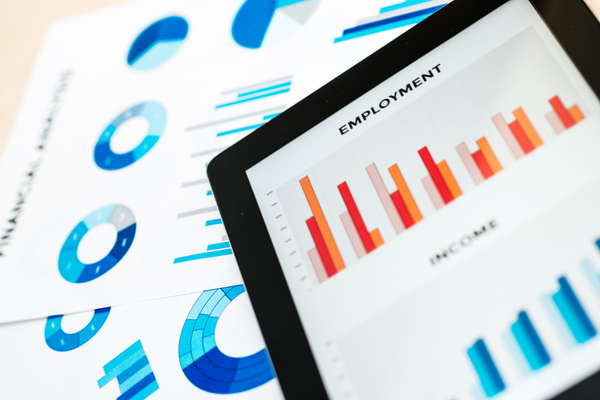
In January 2023, the United States added an astounding 517,000 jobs, and the unemployment rate fell to 3.4% — the lowest level since 1969, before the first moon landing. Measures such as GDP growth, retail sales and the ISM services survey all currently point toward healthy consumer spending and a growing economy.
While low unemployment, rising wages and healthy consumer spending are typically great signals for markets, in this case they’re coming on the heels of the Federal Reserve acting aggressively to tighten monetary conditions, cool the economy and bring down inflation.
In early 2022, the Fed Funds rate was at 0.25%, and at the time of this writing, the rate stands at 4.75%, the most rapid rate of interest rate increases on record. It’s likely that the Fed would have preferred to see more evidence of a cooling economy, a slackening in the labor market and conditions that support an ongoing decline in inflation.
With the currently strong economic readings, especially in the labor market and consumer spending, it’s likely that the Federal Reserve will feel the need to go even further in tightening monetary conditions in order to ultimately bring inflation back down.
Markets are building consensus around this view.
As we entered the year, markets were pricing in the Fed Funds rate topping out around 4.9% in the summer and ending the year around 4.5%. Currently, following recent economic readings and comments from Fed Chairman Jerome Powell, markets are pricing in a peak funds rate of 5.6% this fall and an end-of-year rate at 5.5%.
Recession Anxiety
Higher interest rates put pressure on economic activity in a number of ways, ultimately resulting in decreased demand and slowing economic growth. With the yield curve steeply inverted, and the Fed aggressively hiking rates, classic recessionary signals are flashing yellow.
“A string of economic reports suggested that the economy is stronger, and inflation is hotter, than many investors had previously believed,” The Wall Street Journal said on March 6. “As a result, many investors are less confident now that the U.S. will enter a recession this year. But they also have become more concerned that the Fed will leave interest rates higher for longer… It has also raised anxieties that a ramped-up effort by the Fed to bring down inflation might ultimately cause a more painful recession down the road.”
For investors, we’re recommending a modestly defensive posture as the uncertainty around the path of interest rates and inflation remains elevated.
While our view remains positive for medium to long-term investors to benefit from an eventual recovery, and while opportunities in certain areas such as cash and fixed income are increasingly attractive, 2023 may continue to see a muddled and, at times, volatile market dynamic in the near term. A healthy cash reserve for near-term needs, broad balance and diversification, and an appropriate long-term outlook remain our advice for these conditions.
Fixed Income Update
The two-year U.S. Treasury recently traded above 5% for the first time since 2006, and many short term CDs are also yielding above 5%. With markets pricing in a five-year break-even inflation rate of around 2.6%, investors are seeing some of the more compelling opportunities for real yields than since before the Great Recession.
For short-term or stable value investors, it may be a good time to evaluate the levels of yield you are earning on your savings and ensure it is competitive with market rates. For longer-term investors, while it was a painful 2022 for bonds, many expect that forward returns for balanced portfolios may actually be more attractive than they were in late 2021, due to the return outlook for bonds in this interest rate environment.
We would encourage investors not abandon bonds as part of a balanced portfolio due to a tough 2022. From here, the longer-term outlook for bonds is more attractive than it has been in years, and many expect the diversification and non-correlation benefits likely will eventually return.
As always, New Covenant Trust is here to help. Please don’t hesitate to reach out during these challenging times at 800-858-6127, Ext. 6.
Market Updates at a Glance
The Dow Jones Industrial Average (DJIA) finished February at 32,657 down -4.19% for the month, down -1.48% so far for the year. The S&P 500 closed February at 3,970, down -2.61% for the month, up +3.40% year to date. The NASDAQ Composite lost -1.11% in February, up +9.45% so far in 2023. Small-company stocks as measured by the Russell 2000, ended February down -1.81% for the month, up +7.71% so far year to date. Consumer Cyclical (+12.99%) has been the best performing sector so far in 2023.
